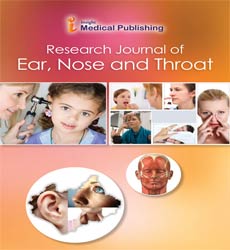Post Auricular Soft Tissue versus Autologous Cortical Bone Graft in Mastoid Cavity Obliteration: A Comparative Study
Abstract
Objectives: compare the results of partial mastoid cavity obliteration with post auricular soft tissue flap versus autologous cortical bone graft after canal wall down mastoidectomy as regard the healing process, control of infection and creation of dry mastoid cavity. Methods: Sixty cholesteatoma patients had done canal wall down mastoidectomy then divided into two groups, Group (A) (30 patients) in whom partial mastoid cavity was obliterated with post auricular soft tissue flap using Palva flap (anteriorly based muscloperiosteal flap) followed by meatoplasty. Group (B) (30 patients) in whom partial mastoid cavity was obliterated with autologous cortical bone pate followed by meatoplasty. Results: healing process was assessed by Merchant grading system showing no patients with persistent discharge and no residual or recurrent cholesteatoma in group (A) with 6.7% in group (B) with constant discharge and recurrent/residual cholesteatoma. Patient satisfaction was assessed using Glasgow benefit inventory survey that showed 90% in group (A) and 83.3% in group (B) had good patient satisfaction. Conclusion: There was no statistical significant difference between mastoid cavity obliteration using Palva flap and by autologous bone pate/chips as regard healing period, otorrhea, postoperative complications, residual/recurrent cholesteatoma and patient satisfaction 12 months after surgery.
Open Access Journals
- Aquaculture & Veterinary Science
- Chemistry & Chemical Sciences
- Clinical Sciences
- Engineering
- General Science
- Genetics & Molecular Biology
- Health Care & Nursing
- Immunology & Microbiology
- Materials Science
- Mathematics & Physics
- Medical Sciences
- Neurology & Psychiatry
- Oncology & Cancer Science
- Pharmaceutical Sciences
